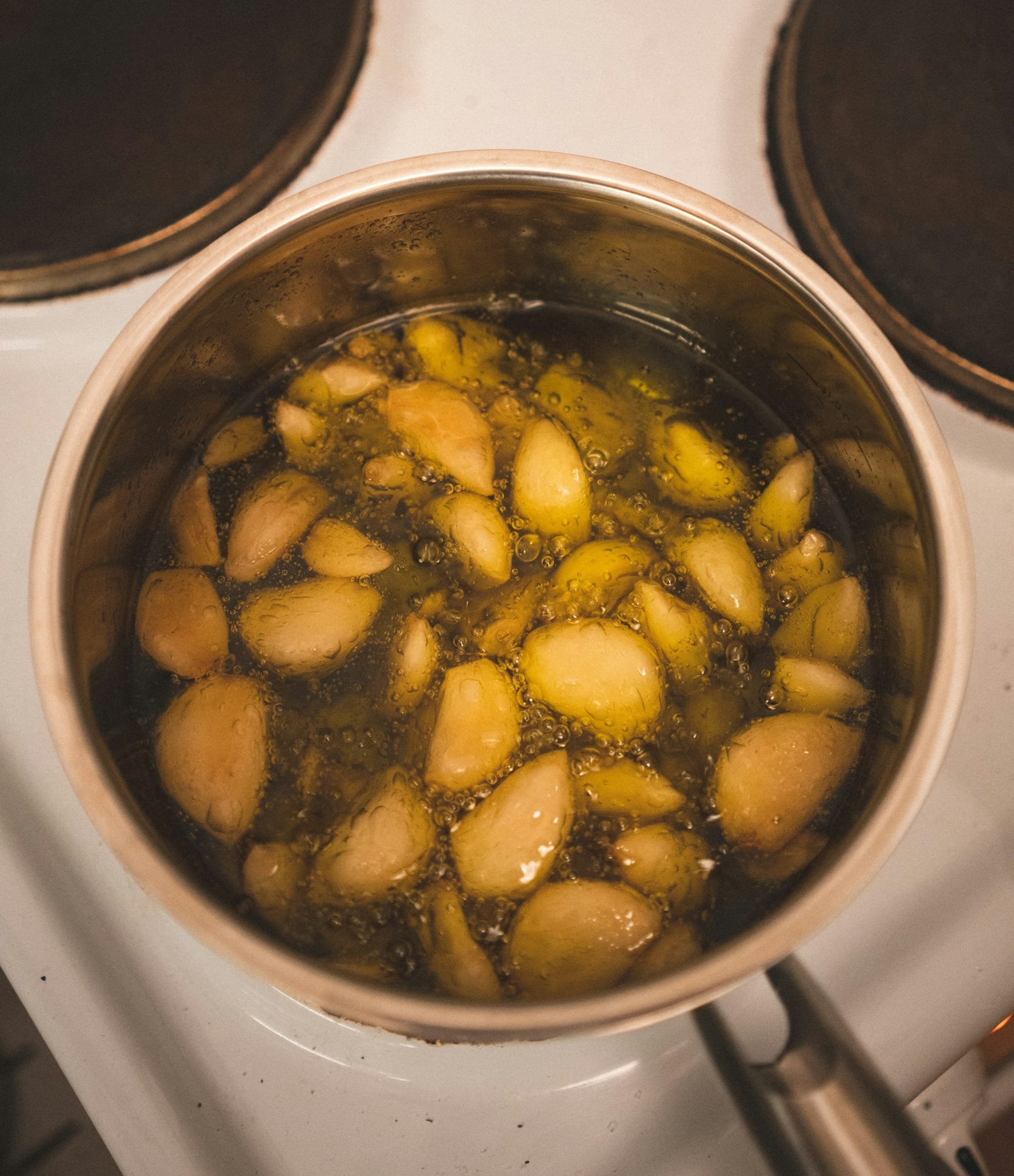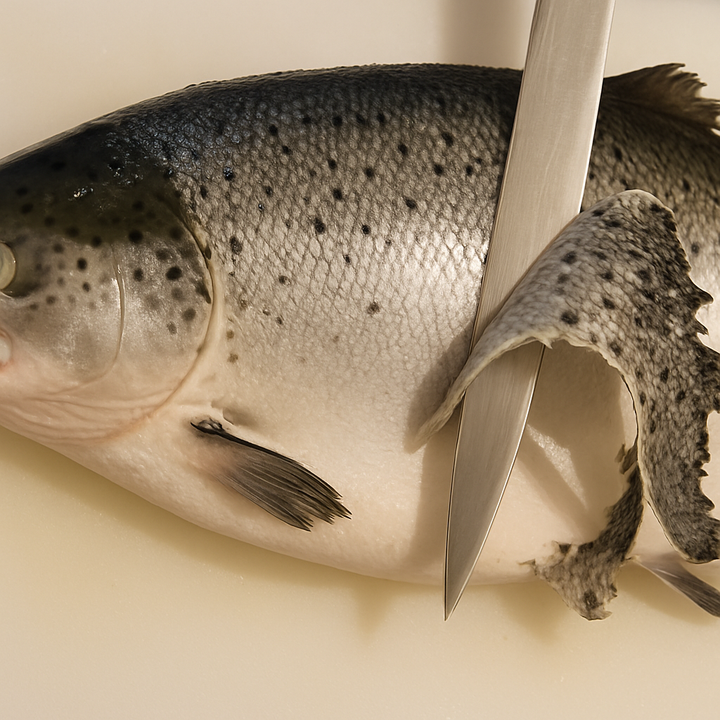Confit: What It Is and How It Works
Confit, from the French confire meaning "to preserve," is a traditional technique of slow-cooking meats, fruits, or vegetables in fat or sugar syrup, originally developed for preservation but now celebrated for the rich flavors and textures it imparts.

The term "confit" (pronounced "kon-FEE") stems from the French verb confire, meaning "to preserve."
Historically, this technique was developed as a method of preservation in the absence of refrigeration.
Whether applied to meat, fruits, or vegetables, confit involves slow-cooking food in a medium hostile to bacterial growth—typically fat for meats and vegetables or concentrated sugar syrup for fruits.
Today, while its roots lie in practicality, the process remains a staple in the culinary world for the exceptional flavors and textures it imparts.
Understanding the Basics of Confit
Confit isn’t just a fancy term; it’s a meticulous cooking method. At its core, the process revolves around submerging food in fat (or sugar syrup for fruits) and cooking it at a low temperature.
The slow cooking allows the food to tenderize while retaining its moisture and flavor.
Once cooked, the food is stored in its cooking medium, creating an oxygen-free barrier to prevent bacterial growth.
Properly prepared confit meats can last for weeks in a cool environment or months in the refrigerator, while fruit confits can be preserved for years.
The Key Difference Between Confit and Frying
Though both methods involve submerging food in fat, confit differs fundamentally from deep-frying due to the temperature.
While deep frying operates at high heat (325–450°F or 165–230°C) to create a crispy surface, confit is a low-and-slow method, typically done at around 200°F (95°C) or lower.
This gentle heat ensures that moisture isn’t rapidly evaporated, resulting in tender, succulent food rather than crispy exteriors.
How the Confit Process Works
Preparation:
- Meats intended for confit are often cured overnight with salt and aromatics. This step enhances flavor and helps draw out moisture, further creating an environment inhospitable to bacteria.

Cooking:
- The food is submerged in fat (usually duck fat, goose fat, or olive oil for meats and vegetables) or sugar syrup for fruits.
- It’s then cooked at a low temperature, often in an oven set between 250–275°F (120–135°C). The fat’s temperature stabilizes around 190–200°F (88–94°C), hot enough to break down connective tissues without causing evaporation or drying out the food.
Storage (Optional):
- If preservation is the goal, the cooked food is transferred to a sterilized container and completely submerged in the cooking medium. When stored in a cool, dark place, this method extends the shelf life significantly.
Why Confit Works
The success of confit lies in its dual role:
- Temperature Regulation: The fat provides a stable and even cooking temperature, ensuring the food cooks uniformly without risk of overcooking.
- Preservation: By creating an oxygen-free barrier, the fat or sugar syrup prevents bacterial contamination, making it a reliable method for long-term storage.
Modern-Day Adaptations
While the preservation aspect of confit was vital in the past, today, it’s primarily valued for its flavor and texture.
Many confit dishes served in modern kitchens haven’t been stored for extended periods but are cooked and consumed within a few days.
The term has also evolved into a verb, as in "to confit" something, showcasing its versatility in contemporary cooking.
Confit Beyond Duck and Goose
The most famous confit preparations often involve duck or goose legs, a tradition rooted in the cuisine of southwest France.
However, the technique is far from limited to these meats. Here are some other delicious applications:
- Pork Belly: Cooking pork belly confit results in tender meat with rich flavors. A quick fry afterward can add a crisp exterior.
- Animal Tongues: The confit method tenderizes the tough connective tissues in tongues, making them melt-in-your-mouth tender.
- Mexican Carnitas: A traditional preparation of pork shoulder, carnitas are essentially confit pieces of meat that are later shredded and crisped.
- Chicken Wings: Confit chicken wings are extra juicy and tender, elevating this casual favorite.
- Vegetables: Alliums like garlic and onions become concentrated in flavor and soft in texture when confit. They’re perfect as condiments or spreads.
Misconceptions About Fat in Confit
One common myth about confit is that the food becomes excessively greasy due to its immersion in fat.
In reality, the fat mostly coats the exterior and doesn’t penetrate deeply into the meat. The interior remains largely unaffected by the fat, similar to other low-and-slow methods like braising or steaming.
Instead, the fat’s primary purpose is to regulate temperature and create a protective barrier against bacteria.
Why Confit Stands Out

Confit is the culinary equivalent of slow-and-steady craftsmanship. Unlike quick techniques like grilling or frying, confit focuses on coaxing out deep, nuanced flavors through patience and precision.
Whether it’s duck legs that fall off the bone, pork belly with a luscious interior, or garlic cloves that spread like butter, confit transforms simple ingredients into extraordinary dishes.
Final Thoughts
At its heart, confit is more than just a cooking method—it’s a celebration of tradition, technique, and taste.
From its origins as a preservation necessity to its modern role as a delicacy, confit continues to captivate chefs and food enthusiasts alike.
Whether you’re confit’ing duck, vegetables, or even experimenting with pork or chicken, this timeless technique promises unforgettable results.


